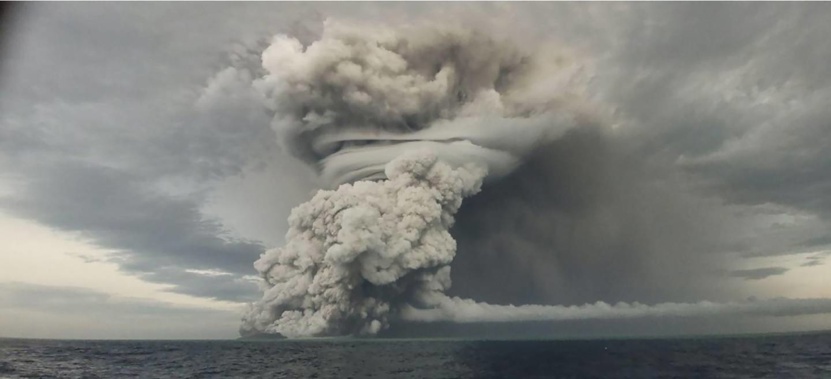
A gravity wave blasted from the spectacular eruption of Hunga Tonga–Hunga Ha'apai in January – and felt and heard in homes across New Zealand – may have been a once-in-a-century event, scientists say.
The January 15 eruption from the submerged volcano sent shock waves, tsunamis and ash hundreds of kilometres across the Pacific – killing at least three people, injuring others, and damaging dozens of homes and buildings.
One Kiwi volcanologist who's been in Tonga studying the event has said the cannon-like blasts it fired out in its first 30 minutes of activity warned people to get away from the ocean – potentially saving many hundreds of lives.
Two smaller tsunami waves, measuring just a few metres high, preceded a main tsunami wave which had a run-up of about 14m – providing another alarm for people too near the water to evacuate.
Now, a large international expert team – combining 76 researchers from 17 countries, including New Zealand – have taken a closer look at the dramatic shockwaves.
In a study just published in major journal Science, they described a rare "Lamb wave" – an atmospheric gravity wave that's sparked by large disturbances like volcanic eruptions.
This wave signal circled the whole globe at least four times during the six days following the eruption – and the recording of this wave was a world-first.
Not only was this signal picked up by pressure sensors around the world but the interaction between the atmosphere and ocean generated tsunami waves globally.
"The atmospheric wave event was unprecedented in the modern geophysical record," said the study's lead author, Dr Robin Matoza from University of California.
"Obviously, I had not seen anything like this in my career. When we first started looking at the data being captured, it felt surreal."
The eruption itself was unique and complex with many unprecedented aspects and phenomena that remained rare in the modern instrumented era.
This group completed the analysis of thousands of stations from more than 100 different geophysical networks in around one month.
Study co-author and Massey University PhD student Anna Perttu explained that sound was actually a pressure wave in the atmosphere, and infrasound was defined as sound with frequencies below human hearing.
"This signal, however, crossed the boundaries between what we consider acoustics, which humans can hear, infrasound, which we can't, and even down lower in the frequencies we call acoustic gravity waves."
The Lamb wave signal that thousands of Kiwis picked up – and was heard as far away as Alaska – proved similar in size to one produced in the 1883 Krakatau eruption, making it a century type of event, Perttu said.
"The signal was found to have completed four trips around the globe across six days as recorded by the global pressure sensor network."
It was also an order of magnitude larger than those waves generated by the famous eruption of Mt St Helens in 1980.
Matoza said the long-range audibility couldn't be explained alone by unattenuated audio-range frequencies originating near the source.
"Such frequency components would not 'survive' the whole path from Hunga to Alaska and based on the spectral properties and waveform shapes, a more complex set of propagation effects is at work."
GNS Science senior volcanologist Dr Geoff Kilgour also considered the Lamb wave "exceptionally rare".
"We have never been able to record such a wave in as much detail before, or for as long a time period," he said.
"Adding to the rarity of the event, the interaction between the atmospheric pressure wave and the ocean contributed to the tsunami activity generated by the eruption, and aided tsunami waves to travel right around the Pacific Ocean and other bodies of water like the Caribbean and Mediterranean Seas."
- by Jamie Morton, NZ Herald
Take your Radio, Podcasts and Music with you









